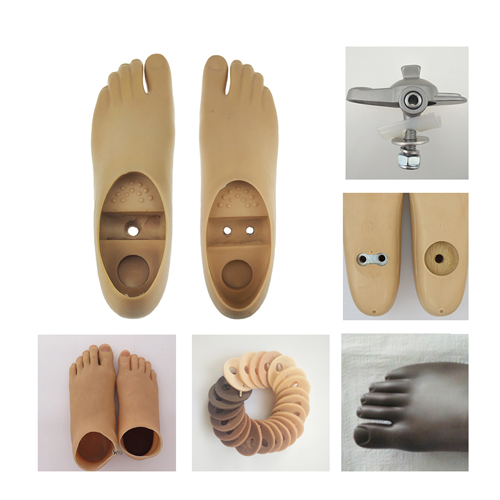Jun. 02, 2023
Health & Medical
Prosthetic feet have revolutionized the lives of individuals with lower limb loss, allowing them to regain mobility, independence, and an improved quality of life. These remarkable devices have evolved significantly over the years, incorporating advanced materials and designs to provide natural movement and enhanced comfort. In this article, we will delve into the world of prosthetic feet, exploring their evolution, functionality, and the impact they have on the lives of amputees.

Prosthetic feet have come a long way from their early rudimentary designs. In the past, simple peg legs and stiff wooden feet were the primary options available to amputees. However, advancements in materials, engineering, and prosthetic technology have led to the development of highly sophisticated and biomechanically advanced prosthetic feet.
Today, prosthetic feet are designed to replicate the natural movements and functions of a real foot. Here are some common types of prosthetic feet:
Solid Ankle Cushioned Heel (SACH) Foot: This is a basic and durable design that consists of a solid ankle and a cushioned heel. The SACH foot provides stability and shock absorption, allowing for a smooth and controlled gait. It is suitable for individuals with lower activity levels and those who require additional support.
Energy-Storing Feet: These prosthetic feet are designed to store and release energy during walking, simulating the spring-like motion of a natural foot. They utilize materials like carbon fiber to provide flexibility and responsiveness, offering a more dynamic and energy-efficient gait.
Dynamic Response Feet: These feet incorporate advanced designs and materials to provide a more natural and responsive walking experience. They utilize specialized components such as carbon fiber blades and elastomeric bumpers to mimic the movement of tendons and ligaments, enabling a smooth heel-to-toe transition.
Microprocessor-Controlled Feet: These innovative prosthetic feet utilize microprocessor technology to adapt to various walking conditions and terrain. Equipped with sensors and advanced algorithms, they adjust the foot's resistance and flexibility in real-time, providing enhanced stability, balance, and control.
Prosthetic feet play a vital role in restoring mobility and improving the overall well-being of individuals with lower limb loss. Here are some key benefits and functionalities of prosthetic feet:
Natural Gait: Prosthetic feet are designed to replicate the natural movement and mechanics of a real foot, allowing users to achieve a more natural and symmetrical gait pattern. This enhances balance, stability, and overall walking efficiency.
Shock Absorption: Many prosthetic feet incorporate shock-absorbing properties, reducing the impact on the residual limb and preventing discomfort or injury. This helps minimize stress on the joints and soft tissues, enhancing overall comfort and reducing the risk of long-term complications.
Versatility: Prosthetic feet are engineered to adapt to various activities and terrains, providing users with the freedom to engage in daily activities, sports, and recreational pursuits. Some designs allow for easy customization and the ability to switch between different components to accommodate specific needs.
Improved Comfort: Prosthetic feet are crafted with user comfort in mind. They are lightweight, anatomically shaped, and designed to minimize pressure points and skin irritation. This enhances user comfort, reduces fatigue, and promotes extended wear without discomfort.
More details please click here
If you are interested in sending in a Guest Blogger Submission,welcome to write for us!
All Comments ( 0 )